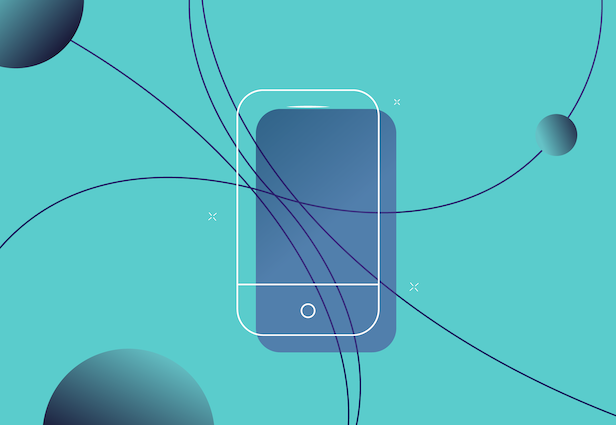
The Ultimate Guide to Performance Max and the Google Ads Network
Performance Max was billed as a big deal back when it was first announced. Having taken marketers by storm back in late 2021, this newest rollout of Google Ads campaigns might have felt a bit of a beast to get to grips with.
But not to worry, if you’re wanting to take your ad campaigns to the next level, then this guide will help you master exactly how Performance Max (pMax) works. Does it live up to its hype? Let’s take a look.
- In this ‘Ultimate Guide to Performance Max’, we’ll cover:
- What Is Performance Max? Plus its Key Features: URL Expansion, Smart Bidding, and Asset Groups & Audience Signals
- How to Create a Performance Max Campaign
- Who Is Performance Max For?
- The Pros and Cons of Performance Max
After we’ve discussed all the need-to-knows of Performance Max, we’ll explore the wider Google Ads Network to help you better optimise your campaigns.
To Get the Most Out of Performance Max, It Takes Experts.
Which is exactly what we have here at Embryo. Get in touch and speak to them today.

"From the very start, Embryo understood our goals, and their campaigns have exceeded our expectations. We're delighted to work with the team and look forward to furthering our success in 2023.”
Array
(
[section_id] =>
[margin_top] =>
[margin_bottom] =>
[padding_top] =>
[padding_bottom] =>
[enable_form_cta] => 1
[enable_image_full_height] =>
)
How to Create a Performance Max Campaign
Now that we’ve gone through the key features of Performance Max, let’s see how to actually create a Performance Max campaign. This information is widely available on the Google Ads Help site, so if you want to know more or hear it straight from the horse’s mouth, you can head over there.
For now, we’ll get you through the basic steps to creating a Performance Max campaign.
- Sign into your Google Ads account
- Select Campaigns on the left-side menu
- Click the large ‘+’ button, and select New Campaign
- Select your campaign’s advertising objective (if not applicable, select Create a campaign without a goal’s guidance)
- Confirm conversion goals for your campaign
- Select Performance Max as your campaign type
- Enter a campaign name
- Select Continue
So, you’ve created your campaign, selected your objectives for it, and confirmed your conversion goals.
Now it’s time to work on your campaign’s budget where you can allocate your spending:
- In the section titled ‘Budget and bidding’, enter your average daily spending amount
- In the ‘Bidding’ section, select a bid strategy – this will either be Conversions or Conversions Value
Your budget represents your monthly ‘allowance’ for an individual campaign that you set for yourself.
Also known as the ‘charging limit’, this is calculated as your average daily budget multiplied by the average number of days in a month.
[Average daily budget x average no. of days in month]
You set your own average daily budget and can change it at any time depending on when you think your ads will receive more or less traffic.
N.B. Your daily spending may vary within one month, but you won’t ever go over your monthly charging limit.
Now it’s time to set where and to whom your ads will be going.
- On the page called ‘Campaign Setting’ under ‘Locations’, select the location that you wish to target.
- Select Enter another location, and input the name of the place you want to target. Then select Target or Exclude, depending on your intention.
- Under ‘Languages’, select the language you want your ads to serve in. Multiple languages can be selected to serve different customer demographics.
It’s now time to choose your asset groups. Courtesy of Google Ads Help, here are the recommended asset requirements that you should follow:
These expand your ads and give users more reasons to view them. They can include useful business data to go beneath your ad such as
- Locations
- Additional links
- Prices
- Other relevant business details
The ‘Extensions’ page in Performance Max shows you a list of recommended ad extensions related to your set goals, so you won’t be in the dark about which to use – if any.
They can provide information that gives the user the opportunity to learn more about your business, as well as invite the user to go further than just visit your website (e.g. make a call, submit an online lead form, etc.).
After being taken to a review page where you can skim through the details of your newly created campaign, you will need to select Publish Campaign to complete the process.

Who Is Performance Max For?
There are around 5 billion internet users, and with 90% control of the market, there are around 4.5 billion active users of Google every month.
In other words, if you want your products or services to be seen pretty much anywhere online, you want them in Google’s network.
Also, if you have specific advertising and conversion goals (such as online sales and lead generation) then Performance Max is ideal, too, due to its heavy emphasis on these factors.
Zooming in, the Performance Max campaign is best for advertisers who don’t have time or prior knowledge to optimise each of the Google platforms like Search and YouTube individually.
The Pros and Cons of Performance Max
Overall, Performance Max has proven itself to be a worthy Google update for those seeking results. Putting performance at the forefront, this updated campaign type works particularly well for generating new leads and increasing return on ad spend (ROAS) – of course, both crucial to any marketer sat behind a campaign.
- Google does all the heavy lifting: Performance Max and Smart Bidding make it more accessible for novice advertisers the appropriate visual and text assets, and you’ll have a targeted campaign at your disposal for the most likely-to-convert users.This lower learning curve means that not every company that uses it has to be an expert in online advertising.
- Flexible for different budget sizes: Using Performance Max has great benefits for companies who wouldn’t otherwise have the budget to spend on a far-reaching online campaign.However, this isn’t to say that those with deeper pockets can’t benefit from Performance Max, too, as they can use it to unlock segments of their target audience that they may not otherwise have access to.
- Strategic performance is better observed: Factors like campaign planning and PPC reporting are easier to obtain with Performance Max as everything is in one campaign, unlike other multi-campaign strategies that take more time to interpret.
- Less control: The lack of control and having to trust that an AI will serve their marketing well can be a turn-off for some marketers who are used to being behind the wheel of their campaigns’ more granular details.
- Rookie errors can still be made: The accessibility to novice marketers can be deceitful. Relying too much on external forces and throwing caution to the wind when setting up Performance Max can cost a company much in wasted marketing resources.
- The AI is only as good as you make it: If you don’t know what you want to achieve out of your campaign and you don’t provide the AI with optimised criteria fit for your campaign, it won’t provide relevant results.

The Google Advertising Network – Search
In this chapter, we’ll discuss the first half of Google’s advertising network: Search. As Google’s premiere service, we’ll come to understand:
- How Google Search is used as an advertising platform
- The Google Ads Auction
- What the different ads are that appear on Search
- Each ad type and its unique uses
Google Search is the most obvious platform for ads considering it is Google’s premiere service. It is estimated that anywhere between 63,000 and 70,000 Google searches are made every second. Google allows companies to buy exposure in the form of paid ads, which appear at the top and bottom of its search engine results page (SERP).
Advertising on Google Search in this way means having your ad feature in the organic search results when someone searches terms related to a keyword.
The ads appear as normal text-based search results…
…but not because of good SEO practices. They are the result of having won an auction (more on this below) against competitors based on keywords and other criteria.
Google Search prioritises user intent, meaning more qualified leads
With Search, the user is actively seeking information that links to what they’ve submitted in Google’s search bar. For example, they may have a certain pain point that your business can solve. The user’s active interest makes them a more qualified audience for the displayed ads, meaning a greater chance of a conversion.
The Google Ads Auction
Every time a search is made on Google, the ad goes through this auction to determine where it appears, if at all. The auction is done automatically by the Google Ads system, which finds all the ads that match the keywords made by the search and, from there, ignores any that either don’t serve that particular region or violate Google’s company policy.
From here, Google then chooses the ads that display a high enough Ad Rank, which is a combination of the bid, ad quality, search context, and more. Due to this combination of factors, ads with lower bids but more relevant keywords can appear higher on the SERP. The consistency of the auctions can fluctuate with every search based on the competition, meaning an ad placing high in one search can end up positioned lower in a similar search.

Dynamic Ads
Dynamic Search Ads are one type of ad that appears on the Search Network that Performance Max takes advantage of. According to Google, they are the easiest way to find customers searching for exactly what you offer as they use the advertiser’s website content to target their ads.
They also generate headlines and landing pages based on the site content, allowing ads to stay relevant and saving advertisers time in tweaking their ads. In this way, Dynamic Search Ads allow ads to stay in relevant searches and ensure advertisers don’t experience delays getting ads written for new products. However, these ads aren’t recommended if the website being advertised changes on a regular basis.
What Are Dynamic Search Ads Best For?
Dynamic Search Ads work best for well-optimised pages that allow Google to identify their terms and themes. They don’t work as well with sites that are image heavy or require some sort of sign-in to access the majority of its content. Otherwise Dynamic Ads have many benefits for advertisers: their dynamically generated headlines offer the most relevant ad for customers, increasing the likelihood of a conversion.
The ads are also flexible to the advertiser’s needs. Ads for specific pages or even entire websites can be excluded or changed, as can temporarily irrelevant pages such as those showing out-of-stock produce.

Call Ads
If you’re paying to have your business land on the top of the Google SERP, you want your ad to be as accessible as possible for those who may convert to paying customers upon reaching your site. And with the majority of Google users on mobile, it makes sense for companies to provide a way for them to make a quick phone call inquiry if they are interested in what you have to offer.
Well, that’s precisely what call ads are.
Key fact: 60% of mobile users have contacted a business directly using a search result such as a click-to-call option.
Google call ads are designed to encourage users to call a business directly from their mobile. Instead of the ad linking to a site landing page, it makes them call the advertised business directly.

Shopping Ads
Shopping ads are image-based ads that show up at the top of certain Google searches, usually before or next to any text-based results. These are unique ads in that they display a lot of important information for prospective buyers in one small space, including:
- Price (including any reductions or offers)
- Name of the seller
- A high-quality image of the product
- Any promotions related to the seller, such as free delivery
The Google Advertising Network Is Our Team’s Bread and Butter.
Speak to us to learn how we can help you leverage this incredible marketing channel.
BCB Group
Using a modern, multi-channel marketing strategy to transform a business into an authority in an emerging market
-
149%
Increase in page views
-
11.7%
Decrease in bounce rate
-
97/100
Core Web Vital score
-
67
keywords in position
Array
(
[section_id] =>
[margin_top] =>
[margin_bottom] =>
[padding_top] =>
[padding_bottom] =>
[enable_form_cta] => 1
[enable_image_full_height] =>
)

The Google Advertising Network – Display Ads
In this chapter, we’re going to discuss the other side of Google’s advertising model, Google Display.
Google Display Ads allow advertisers to show their products and services across Google’s extensive suite of websites like Discover and YouTube.
- Display Ads are image-based ads that are usually optimised for mobile and are based on user activity on Google, such as:
- Site visits
- App downloads
- YouTube videos watched
- Map searches
This type of Google Ad is intended to increase brand awareness and user engagement via a more visually impactful ad format that only serves audiences who will find the content relevant.
This is where Performance Max automatically generates its ads, so it’s important for you to know what the Google Display Network is, how each website displays ads, the intentions behind why they are placed there and how they benefit advertisers interested in Performance Max.
What Is the Google Display Network?
The Google Display Network (GDN) is a group of more than 2 million websites and apps – including Google Finance, Gmail, Blogger, and YouTube – where your ad can feature. For marketers, advertising via Google Display is a much more passive form of online advertising.
Therefore, whilst Display Ads receive considerably more impressions from users, they also have far fewer conversions.
The ads are displayed across certain Google Suite platforms – as well as third-party sites – in a way that increases brand awareness rather than directly converting users there and then.
With billions of monthly users on each of these platforms and sites, Google has allowed for extremely wide reach and potential for prospective conversion for advertisers who use Display ads.
Ideally, Display Ads are used in tandem with Search Ads so that, by the time a user is ready to convert, they do so with the brand that is more at the forefront of their memory.
Advertisers just need to provide assets like images and videos and, with the help of Performance Max, will enjoy automated ads across each of the platforms.

- Find addresses and get directions
- Keep up to date on traffic information
- Explore locations from across the world
- Know more about businesses in a certain area
Google Maps
Since its launch in 2005, Google Maps helps over a billion people (literally!) each month to:
It can now even tell you very granular business details such as opening and closing times, as well as customer reviews and prompts to take action with the ‘Call’ and ‘Directions’ buttons.
Being such a ubiquitous platform for navigation and geo-location, it was an inevitability that ads were going to be placed on it at one point.
Google Maps allows businesses to advertise on a local basis in a way that can push nearby eyes away from nearby competition and drive further traffic to their websites. This is done through Local Search Ads which bump up your business or establishment to the top of the Google Maps search results page to encourage people to check yours out before they do so with others. It’s also done through Promoted Pins these make your business or establishment stand out amongst your competition outside of the search engine results page whilst users are scanning the larger map.

Local Search Ads
Unlike its other platforms, Google takes advantage of the geographical nature of the Maps platform to generate ads. It gives advertisers the opportunity to win the attention of local traffic in the form of local search ads.
By appearing as a local search ad on Google Maps, businesses can stand out from their competition and likely increase their local exposure, which may sway many potential visitors into checking out their business over the others.
Key fact: 78% of local mobile searches result in an in-store purchase

Promoted Pins
Being the interactive and intuitive platform that it is, Google can help promote a business even without an initial search. With the help of Promoted Pins, businesses can stand out to users who are scrolling on the map instead of actively searching for a particular place.
When looking for restaurants in the Manchester area, for example, Google Maps will draw your eye to relevant options using the balloon-shaped pin. For businesses looking to stand out on the map, they can use the Promoted Pin feature, which displays their establishment with a differently shaped pin, usually a square.
Usually, when you click on one of these businesses, different information and features pop up with it, such as:
- Directions
- An option to save the place for future reference
- An option to share the place as a link with others
- A brief description of the business
- Opening and closing times
The Promoted Pins, however, also feature a crucial piece of information that makes potential customers’ journeys to becoming paying customers much easier. Whereas one business may enjoy the usual features that Google Maps has to offer, including important information like addresses and opening times, promoted pins can leverage features such as direct links to their website.
As well as driving extra traffic to the site, promoted pins will provide the user with more comprehensive insight into the business than the relatively smaller information real estate that Google’s Search results provide.
How Can I Make Maps Ads Work with Performance Max?
Obviously, the ads served on Discover and the location-driven ads on Maps are different to each other.
When you’re providing Performance Max with the asset groups during your campaign setup, you need to optimise your ad to display when targeting searches in your area.
Therefore, you should target searches within your city or postal code so that people using Google Maps near you will find you. Local searches can be more precise due to the nature of people’s search intentions.
If people are searching specifically for your type of business, then you should know beforehand what that target audience looks like so you can better serve them with your ad.
When optimising and timing your Maps search ad, you also want to run it during your business hours, or even a short while before you open so potential customers can get in touch with you more immediately.
YouTube
You probably know that Google.com is the most visited web domain in the world, but do you know what the second most-visited web domain is?
No, it’s not embryo.com, but we’re working on it.
It is, in fact, YouTube. Yes, Google and its parent company Alphabet have a true stronghold on the internet. Combined, these two websites rake in over 120 billion – yes, that is a ‘B’ – monthly visits. This outpaces the forty-seven websites that sit below them combined and totals over two trillion visits every year.
There are some equally mind-blowing facts about YouTube alone, including:
- Around 1.8 billion people visit the site every month
- About 37% of all mobile internet traffic in the world goes to and from YouTube
- Over 500 hours of content is uploaded to YouTube every minute – that’s about three weeks of video content uploaded every 60 seconds!
This is all to say that YouTube is a living, breathing organism within the internet ecosystem. Billions of eyes land on YouTube every week and this makes it ripe for advertising potential. So many of us watch YouTube that it almost seems redundant to discuss how Google uses YouTube to show ads; so many of us will have pressed that ‘Skip ads’ button more than we can fathom.
But let’s take a deeper look into YouTube advertising by exploring what YouTube ads look like and the benefits of advertising on this platform.
What do YouTube Ads Look Like?
There are four video ad formats that (the free version of) YouTube has on its browser site and app.
These are video ads that vary in length (although they tend to run between 30 seconds and 2 minutes) and, as the name suggests, can be skipped by the user after 5 seconds.
These video ads last for about 15-20 seconds and cannot be skipped.
These are short, non-skippable video ads that last up to 6 seconds and must be watched before a video can be viewed.
These ads are a little less discussed in the conversation of YouTube advertising. Where the other ad formats interrupt the video-watching process, overlay ads creep onto the bottom 20% of the video player and can be easily clicked off. They also only exist on the desktop version of YouTube.
Array
(
[section_id] =>
[margin_top] =>
[margin_bottom] =>
[padding_top] =>
[padding_bottom] =>
[enable_form_cta] => 1
[enable_image_full_height] =>
)

The Power of Performance Max
Performance Max is a useful update to Google’s advertising efforts. It simplifies the process for advertisers whilst expanding where their adverts can be shown across the vast range of Google’s platforms. Machine learning technology also takes much of the guesswork out for the more human-inclined marketing teams.
This allows them to focus more on their efforts on a macro scale rather than zooming in on several campaigns at once. As well as this, the AI-led approach to Performance Max is a much more accessible option for rookie advertisers who are new to the Google advertising network and aren’t familiar with its many facets.
It benefits companies of all budget sizes: those who have less to spend can still make far-reaching campaigns for their money and, on the flip side, larger companies can use their deeper pockets to unlock new segments of their audience that they maybe wouldn’t have access to due to a much higher potential of users that Performance Max gives way to. More than anything, though, Performance Max uses the power and sheer scope of the Google Advertising Network, which spans most aspects of the online experience that Google has shaped for users for decades.

The team at Embryo is a joy to work with. They understand what we want to achieve as a business, their level of service is excellent, and they are constantly analysing metrics and data to ensure that together we overachieve in the performance of campaigns.
They have become a natural extension of my marketing department and I look forward to what the future brings.
Performance Max FAQs
Performance Max is one of the latest campaign types launched by Google. It allows advertisers to display ads across Google’s entire advertising inventory from a singular campaign, including:
- Search
- YouTube
- Google Maps
- Discover
Performance Max also uses the help of machine learning and advertiser input to automate the targeting and delivery of a campaign.
Performance Max is ideal for e-commerce; it is the first style of campaign that allows marketers to access both the top and bottom of the sales funnel via one singular campaign.
Now that Google is providing more visibility from an optimisation standpoint, Performance Max is becoming increasingly effective for the majority of e-commerce brands, especially those with strong creative assets.
- Create a new campaign within your account (via the blue ‘+’ button).
- Select your main campaign objective – sales, lead gen, website traffic, promotions, store visits, etc. – to allow Performance Max to optimise for your specific conversion goal.
- Select the campaign type as ‘Performance Max’.
- Select daily budget, bidding strategy, location and language.
- Set up your ‘asset groups’ – these are a collection of creatives centred on a theme or related to a target audience in the form of images, logos, headlines, descriptions, and videos.
- Once set up, you then have the option to add multiple ad extensions (e.g. Sitelinks, structure snippets, etc.).
In a nutshell, no. Performance Max at the moment does have a Search feature whereby you can input keywords to help with your Search network targeting. However, manual Search campaigns allow for much more control when it comes to:
- Keywords
- Ad groups
- Campaign segmentation
- Bid strategy flexibility
- Landing page testing
Performance Max doesn’t yet have enough control or visibility in order to outperform large-scale Search campaigns, especially for lead gen.
With Google’s 500 touch-point paradigms, it typically takes up to two weeks for a Performance Max campaign to complete its ‘learning’ phase.
However, depending on the specific goals and KPIs of the business, a Performance Max campaign can ‘work’ well before or after this learning phase is completed.
Performance Max has replaced Smart Shopping entirely for businesses after a phased rollout beginning in April 2022. Any legacy Smart Shopping campaigns that haven’t been manually upgraded to Performance Max will be done so automatically.
Performance Max campaigns are great for a variety of reasons, predominantly because of their ability to:
- Create demand via Display and YouTube
- Capture demand via Shopping and Search
This is completely unique to Google’s past campaign options.
If you’re an e-commerce business and you want to feature on the Google Shopping network then it’s crucial that you have a feed set up. If advertising on Google Shopping is not relevant to your business, however, then you will not need a feed.
There are some assets that are necessary for Performance Max, including images that highlight your product or service, as well as brand imagery and logos.
Though bespoke videos are not essential as Google generates their own based on display images and ad copy, they are recommended. This is because the automatically generated Google videos are of poor quality and do a poor job of advertising the business/products.
Just upload your various assets to each channel and Google’s machine learning then tests which combinations work best for your campaign.
Performance Max campaigns can be run across the entire Google network, including Search, Display, YouTube, Gmail, Shopping, and Discovery. This wide scope of coverage is one of the key benefits that makes Performance Max stand out from Google’s other campaign types.
Performance Max was announced in May 2021 at a Google Marketing live stream event and then began a phased rollout from April until September 2022.
With Performance Max, increasing the budget every two weeks is recommended when scaling. Depending on your budget, the time period to increase can be sooner or later.
For example, if you are spending £40 to £50 per day, you should aim to wait 2 weeks, making the judgement based on the data collected.
If you are spending £100 per day, you would naturally have more data because Google’s machine learning is quicker when it has more budget to spend, so you can make that change in budget sooner rather than later.
However, you must give your Performance Max campaign enough time to analyse the data.
This can take up to 45 days so you should let your Performance Max campaigns run for a month minimum – without tweaking any of the settings – before making any budget increase considerations so you can fully understand it.
When you start seeing consistent results on goals like ROAS, you can then begin to gradually increase your budget.
Performance Max is a new goal-based campaign type. It allows Google Ads users direct advertising access to all channels – including YouTube, Display, Search, Shopping, Discover, Gmail & Maps – from a single campaign.
Goal Focused – Performance Max has targeting settings based on the conversion goals that you select in the campaign setup, so your marketing objectives are always prioritised above anything else. It also uses Smart Bidding to look at historical search behaviour to predict the likelihood of a conversion and can increase your bid when it deems a conversion more likely.
Easier Ad Optimisation & Ad Copy – Ads are built and evaluated by Google across many iterations of ads. Like the name Performance Max suggests, this evaluation is to guarantee your ads are performing to their highest potential. Whichever combination of ads performs the best – according to your campaign goals – determines which ones get shown more frequently.
Full Channel Coverage – Performance Max makes it easier to manage your campaign as it makes use of all of its channels – Search, Display, YouTube, Gmail, and Discovery. By using full channel coverage, ads reach a wider audience and gain more visibility.
Saves Time and Money – You do not need to be a PPC expert to run a Performance Max campaign. In fact, Google’s machine learning does a lot of the hard work for you as long as you provide the relevant campaign inputs. This saved time can then be used to plan, create, and optimise higher-quality creative assets.
You create a new campaign within your account with the campaign type set as ‘Performance Max’ along with setting your conversion goals, bidding strategy and budget.
The best practices for building Performance Max campaigns include:
- Implement accurate, full-funnel conversion tracking
- Use URL extensions
- Add at least one video asset
- Create an audience signal
- Use conversion objectives only
Like any campaign, Performance Max works if it is used correctly and set up with best practices. It’s best when you have specific conversion goals like driving sales or generating leads and when you aren’t limited by which channel your ads appear on.
Performance Max is relatively quick to set up and best used as a supplement to your pre-existing efforts.
However, there is still an ongoing debate as regards its overall value due to the lack of control that comes with giving over your campaign to Google’s AI rather than monitoring it yourself
It is neither worse nor better. Both have different variables and different campaign settings, so this question depends on the goals of your business/campaign.
Performance Max provides greater capacity for wider reach due to the higher number of Google’s networks in runs, whereas Smart Shopping required fewer assets than Performance Max.
Performance Max is replacing Smart Shopping. The difference between the two is that Performance Max is more goal-based and audience oriented, whereas Smart Shopping was reliant on shopping titles/product categories in relation to targeting. Performance Max also allows you to use bid modifiers, ad schedules, as well as video.
Audience signals are a new feature unique to Performance Max campaigns. They let you suggest audiences to Google’s algorithm in order to score better conversions.
By letting Google Ads know what type of users you’re interested in showing your ads to, audience signals can ‘jumpstart’ a Performance Max campaign by optimising based on your goals.
Each Performance Max campaign requires at least one asset group made up of images, logos, headlines, descriptions, and videos.
There is a maximum of 100 asset groups per campaign, which is a huge advantage for eCommerce clients.
Performance Max works well with search campaigns as a complementary campaign helping you to find more converting customers across all of Google’s channels.
This means your search campaign will help fuel your Performance Max campaign enabling it to fast-track its data process, therefore accelerating its learning phase.
Fortunately, with Performance Max, users are given a wealth of options and controls to use, including:
- Asset Groups: ad copy, display imagery, video assets
- Audience Signals: who you want Google to target, what data you want Google to utilise, competitor websites, search terms audiences/demographics
- Product Listing: SKU (stock-keeping unit) targeting
- Bidding strategies: maximise conversion value, maximise conversion value w/ TROAS (target return on ad spend), maximise conversions, maximise conversions with TCPA (target cost per acquisition)
- Budget adjustments
- Conversion actions you’re wanting to achieve
- Seasonal bid adjustments
- Excluding poor-performing products
- Final URL Expansion setting (On or Off)
- Targeting historically non-converting users exclusively or placing preference on targeting historically non-converting users
- Removing all asset groups to run campaigns as smart shopping
- Negative keywords list (via Google Account Managers)
- Search terms reporting / insights
- Ad schedule segmentation
- Location targeting
- Extensions
- Auction insights reporting
- Assets performance/insights
Performance Max reporting is currently quite limited. What you can report on:
- Top-level campaign performance
- Location performance
- See performance reports by day of week and hour of day
However, you can’t report on individual assets, only a general overview.
The biggest difference that separates Performance Max from other campaign types is automation and machine learning. You provide the information (budget, target metrics, etc.) and Google handles the targeting and delivery of ads using smart bidding.
Performance Max was designed to learn what works best through machine learning, meaning your ads should perform better the more you use it.
Performance Max has been created to maximise the performance of your campaign. Performance Max may suit you if you have:
- A small budget and want more ad exposure across different channels.
- Little to no knowledge of Google Ads. This is because Performance Max is mostly automated and therefore requires little input.
- Limited time or resources to optimise each channel.
- Previously found Smart Shopping campaigns beneficial.
Although Google makes it relatively simple for you to set up your Performance Max campaign, there are some things to keep in mind, such as:
- Implement accurate, full-funnel conversion tracking.
- Create a PMax segment in Google Analytics for better reporting.
- Use URL exclusions.
- Add at least one video asset.
- Watch out for default location settings.
- Use Performance Max for conversion objectives only.
- Create an audience signal
- Check the Insights tab for improvements in reporting transparency.
- Don’t duplicate your Merchant Center feed imagery.
- Watch out for customer acquisition rules.
A performance marketing strategy involves advertisers only paying when a specific action occurs. This can be a conversion or lead generated. Advertising objectives such as CPM (cost per mile), CPC (cost per click), CPA (cost per acquisition), and CPL (cost per lead) are therefore a measure of performance marketing effectiveness.
Companies using Performance Max marketing pay only when a specific action is achieved. It is therefore a cost-effective and results-driven strategy, especially useful for businesses with a limited budget. Paying only for achieved results helps in ensuring money is well-spent.






